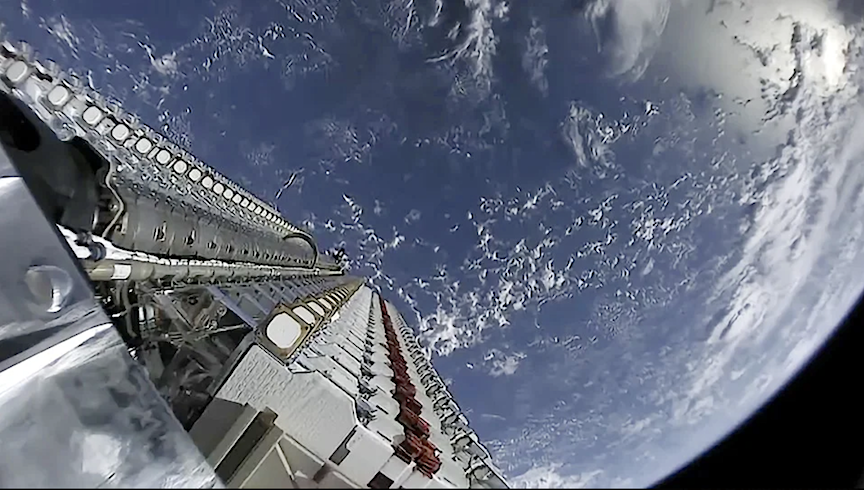
Image: SpaceX
The removal of so many satellites at once is unprecedented, highlighting the challenges of huge satellite constellations.
An unspecified defect in early model Starlink satellites has prompted SpaceX to preemptively deorbit the units before they potentially fail and become hazards in low Earth orbit. While the company remains confident that the deorbiting of these problematic units will prevent any issues, this incident underscores the challenges and uncertainties in navigating the realm of gigantic satellite networks.
The deorbiting of Starlink satellites is a commonplace task for SpaceX; the Elon Musk-led company has already initiated the disposal of 406 units from the nearly 6,000 satellites launched to date. Among these, 17 are currently non-maneuverable but are expected to naturally decay and eventually burn up in Earth’s atmosphere in the coming years. However, the decision to deorbit a large batch of approximately 100 satellites within a brief amount of time is certainly out of the ordinary.
SpaceX plans to initiate these controlled descents over the next few weeks and months, and the whole process should take roughly six months to complete, the company said in a statement. The chosen units, all early-version 1 Starlink satellites, are “currently maneuverable and serving users effectively, but the Starlink team identified a common issue in this small population of satellites that could increase the probability of failure in the future.”
The exact nature of the issue was not disclosed, and SpaceX does not respond to media requests for additional information. In its statement, SpaceX reassured its customers that Starlink services will remain uninterrupted, while adding that the satellites will still be able to avoid collisions with other satellites during their descent throughout the decommissioning phase. Replacing these stricken units should likewise not be a problem, with SpaceX now capable of launching upwards of 200 Starlink satellites each month.
There are currently 5,402 functioning Starlink satellites orbiting in low Earth orbit (LEO), the first of which were launched in 2019. These satellites are designed to connect directly with ground receivers and deliver internet service to customers through flat user terminals. The current fleet consists of thousands of units, but SpaceX has plans to deploy tens of thousands.
By George Dvorsky of Gizmodo
